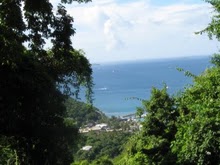 |
| Northern Flicker |
There are five subspecies of this bird, with two types of Northern Flicker
 |
| Looking up |
They feed on mostly insects, ants in particular with which they seem to also have a co-operative relation ship of sorts, as they have been observed letting ants crawl of over them. The theory is that the ants help rid them of pests. It is interesting to note that, just like an anteater, Northern Flickers have an extremely long tongue to help them feed on ants. If you wish to attract them to your backyard just install a suet feeder as they will feed on it, especially if your yard is populated with a few trees and bushes. Like all woodpeckers they will forage for bugs along tree trunks, and also occasionally feed on crickets, nuts, fruits and berries. Interestingly enough they have also been observed catching insects in flight.
 |
| Alert |
The Northern Flicker prefers open forests, groves and orchards and have been known to occupy city parks, and wooded backyards. They are known by alternate names such as Yellow hammer, Gaffer and Gawker bird. Being woodpeckers, they nest in tree hollows that they hammer out themselves, but will also occupy nest boxes created for them if they are of an appropriate size.
 |
| Northern Flicker back view |
http://www.seattleaudubon.org/birdweb/bird_details.aspx?id=279
In addition you can view videos at this link if you are so inclined: http://www.squidoo.com/northernflicker
As you can see, although my abilities at photography is as yet somewhat limited, I did try to give you an all around view of this bird. Enjoy.
Susan











No comments:
Post a Comment